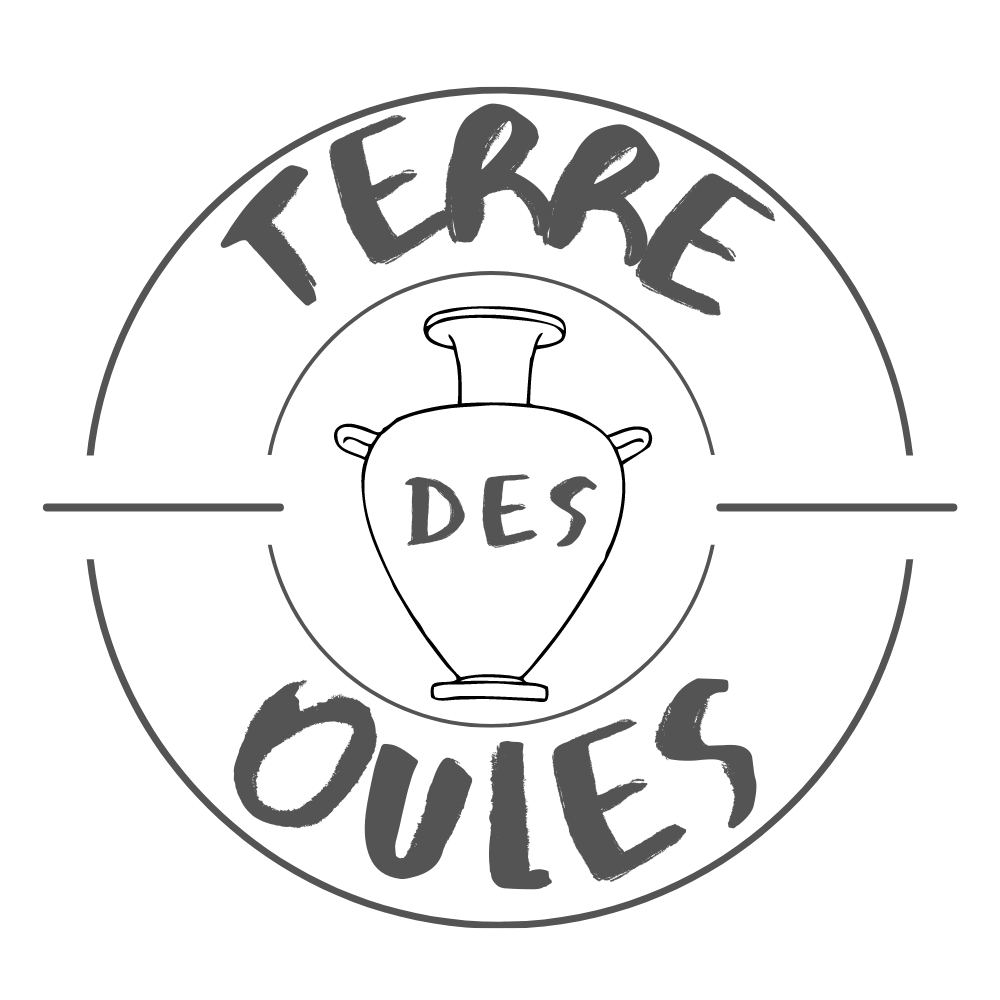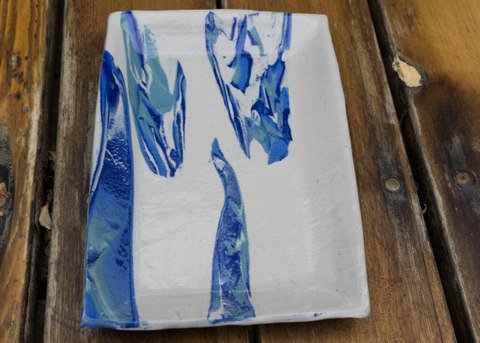What is Nerikomi?
How I got started with the Nerikomi technique
and what the different terms used to describe it mean.
I started ceramics more than 15 years ago now, but it’s only in the last five or so that I started experimenting with colored clay. At first, I just used two clays I had on hand, white and red stoneware clays with similar shrink rates (a very important factor). I wedged them separately then stuck them together and threw with them. I loved the result so I kept going.
Marbling different clays logically led me to experimenting with colored clay. I didn’t get any classes on this, just looked up information online, asked my husband to help me figure the math - you need way too much math and other science like chemistry to do ceramics in my opinion! - bought three or four different shades of blue stains and colored my first batch of clays.
Once I had colored clay on hand (more about perks and challenges of making colored clay here), I threw some of it and then started doing more handbuilding and combining them haphazardly. I loved the marbling effects I got by just slapping pieces of colored clays randomly on a white clay slab and spreading them out with a rolling pin or a slab roller. Little by little I started doing more intricate patterns and find out everything I could about this technique online.
Examples of mugs I made originally with a red clay and a white clay
This was a difficult step in and of itself because I wasn’t sure what keyword to use. There are several different terms that refer to the same or neighboring technique in colored clay.
Early attempts are throwing with colored clay
The two main keywords I found were Agateware and Nerikomi. Agateware is British and Nerikomi is Japanese. Agateware can be handbuilt or on the wheel and seems to mostly refer to mixing the clay to create a marbled pattern. “ Marbling” is a ceramic term too. “Nerikomi” (Japanese: Neri: to mix, Komi: to press into) and Neriage (Neri: to mix, Age: to pull up) are Japanese terms. The first one is used for handbuilding and the second one for throwing on the wheel, both with colored clay, but I have seen both used interchangeably as well. Japan has a very strong ceramic tradition, so it’s not surprising that they developed quite a strong Nerikomi tradition as well with traditional designs.
Another term that I have seen is “millefiori” which means “a thousand flowers” in Italian and is borrowed from glassmaking. Nerikomi technique is inspired by glass making since you’re basically making clay canes instead of glass canes.
If you’re interested in the history of colored clay, you can also look up “Egyptian paste” as another example of colored clay going back a few thousand years.
Once I figured out what keywords to use and what they meant, I just fell down the rabbit hole and tried everything related to colored clay I came across (some of it from polymer clay tutorials). Nerikomi opened a whole new playbook to experiment with, and I don’t think I’ll ever get tired of it. There are all sorts of downside to this technique but it’s well worth it in my opinion.
Early attempt at handbuilding with colored clay
Examples of Nerikomi Designs I have been doing recently
Nerikomi as a technique allows you to create endless designs in the clay itself and I just love it. There are traditional designs that I have been collecting preciously and trying to replicate, but it’s a lot of fun to come up with my own ideas too. The sky is the limit!





